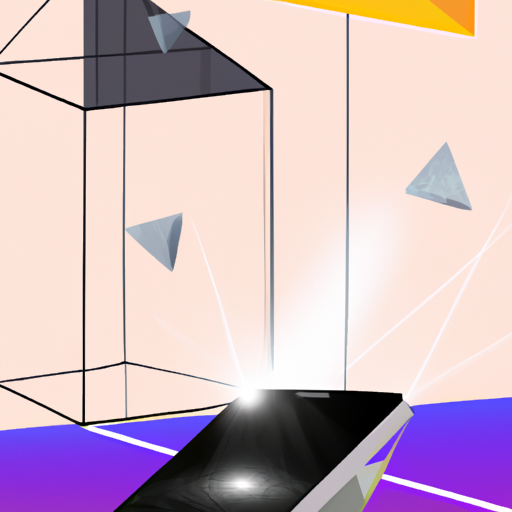-
Table of Contents
- Introduction
- Exploring the Benefits of Mobile Virtual and Augmented Reality Technology in Education
- How Mobile Virtual and Augmented Reality Technology is Changing the Way We Interact with the World
- The Impact of Mobile Virtual and Augmented Reality Technology on the Gaming Industry
- The Future of Mobile Virtual and Augmented Reality Technology: What to Expect in the Coming Years
- Conclusion
“Experience the Future of Reality with Mobile Virtual and Augmented Reality Technology!”
Introduction
Mobile virtual and augmented reality technology is a rapidly growing field of technology that has the potential to revolutionize the way we interact with the world around us. It combines the power of virtual reality (VR) and augmented reality (AR) to create immersive experiences that can be accessed from anywhere. With the help of mobile devices, users can explore virtual worlds, interact with digital objects, and experience augmented reality in ways that were previously impossible. This technology has the potential to revolutionize the way we learn, work, and play. It can also be used to create new forms of entertainment, communication, and collaboration. As the technology continues to evolve, it will open up new possibilities for how we interact with the world around us.
Exploring the Benefits of Mobile Virtual and Augmented Reality Technology in Education
The use of mobile virtual and augmented reality technology in education has become increasingly popular in recent years. This technology has the potential to revolutionize the way students learn, providing them with an immersive and interactive learning experience. In this article, we will explore the potential benefits of mobile virtual and augmented reality technology in education.
One of the primary benefits of mobile virtual and augmented reality technology in education is that it can provide students with a more engaging and immersive learning experience. By using virtual and augmented reality, students can explore virtual environments and interact with objects in ways that are not possible in a traditional classroom setting. This can help to make learning more engaging and enjoyable for students, as well as providing them with a more comprehensive understanding of the material.
Another benefit of mobile virtual and augmented reality technology in education is that it can provide students with a more personalized learning experience. By using virtual and augmented reality, teachers can tailor the learning experience to the individual needs of each student. This can help to ensure that each student is able to learn at their own pace and in a way that is best suited to their individual learning style.
Finally, mobile virtual and augmented reality technology in education can also help to reduce the cost of education. By using virtual and augmented reality, teachers can create virtual classrooms that can be accessed by students from anywhere in the world. This can help to reduce the cost of travel and accommodation for students, as well as reducing the need for physical classrooms.
In conclusion, mobile virtual and augmented reality technology in education has the potential to revolutionize the way students learn. By providing students with a more engaging and immersive learning experience, as well as a more personalized learning experience, this technology can help to make learning more enjoyable and effective for students. Additionally, it can help to reduce the cost of education by eliminating the need for physical classrooms.
How Mobile Virtual and Augmented Reality Technology is Changing the Way We Interact with the World
Mobile virtual and augmented reality technology is revolutionizing the way we interact with the world. This technology is allowing us to experience the world in a completely new way, and it is having a profound impact on our lives.
Virtual reality (VR) is a computer-generated simulation of a three-dimensional environment that can be interacted with in a seemingly real or physical way. It is typically experienced through a headset, which immerses the user in a virtual world. Augmented reality (AR) is a technology that overlays digital information onto the real world. It is typically experienced through a smartphone or tablet, which allows the user to view the real world with digital information superimposed on it.
Mobile virtual and augmented reality technology is changing the way we interact with the world in a number of ways. For example, it is allowing us to experience the world in a completely new way. With VR, users can explore virtual worlds and experience them as if they were real. With AR, users can view the real world with digital information superimposed on it, allowing them to gain a deeper understanding of their environment.
In addition, mobile virtual and augmented reality technology is allowing us to interact with the world in a more immersive and engaging way. For example, VR can be used to create interactive experiences that allow users to explore virtual worlds and interact with them in a more meaningful way. AR can be used to create interactive experiences that allow users to interact with the real world in a more engaging way.
Finally, mobile virtual and augmented reality technology is allowing us to access information in a more efficient and effective way. For example, AR can be used to provide users with contextual information about their environment, such as directions, reviews, and more. This allows users to access the information they need quickly and easily.
In conclusion, mobile virtual and augmented reality technology is changing the way we interact with the world in a number of ways. It is allowing us to experience the world in a completely new way, interact with the world in a more immersive and engaging way, and access information in a more efficient and effective way. As this technology continues to evolve, it will continue to have a profound impact on our lives.
The Impact of Mobile Virtual and Augmented Reality Technology on the Gaming Industry
The gaming industry has seen a tremendous amount of growth in recent years, and mobile virtual and augmented reality technology has been a major contributor to this growth. Virtual reality (VR) and augmented reality (AR) technology have revolutionized the gaming industry, allowing players to experience immersive, interactive, and realistic gaming experiences.
VR technology immerses players in a virtual world, allowing them to interact with the environment and other players in a realistic way. This technology has been used to create a wide range of gaming experiences, from first-person shooters to virtual reality theme parks. AR technology, on the other hand, overlays digital elements onto the real world, allowing players to interact with the environment in a more realistic way. This technology has been used to create augmented reality games, such as Pokemon Go, which have become incredibly popular.
The impact of mobile virtual and augmented reality technology on the gaming industry has been profound. This technology has allowed developers to create more immersive and realistic gaming experiences, which has resulted in an increase in the number of players and the amount of time they spend playing. Additionally, this technology has allowed developers to create games that are more accessible to a wider range of players, as well as games that can be played on a variety of devices.
The impact of mobile virtual and augmented reality technology on the gaming industry is likely to continue to grow in the coming years. As technology advances, developers will be able to create even more immersive and realistic gaming experiences. Additionally, as more players become familiar with this technology, more developers will be encouraged to create games that utilize it. As a result, the gaming industry is likely to continue to benefit from the impact of mobile virtual and augmented reality technology.
The Future of Mobile Virtual and Augmented Reality Technology: What to Expect in the Coming Years
The future of mobile virtual and augmented reality technology is an exciting prospect. In the coming years, we can expect to see a rapid expansion of the technology, with more and more applications being developed for both consumer and enterprise use.
One of the most significant developments in the near future will be the integration of virtual and augmented reality into everyday life. This will be enabled by the increasing availability of powerful mobile devices, such as smartphones and tablets, which will allow users to access virtual and augmented reality applications on the go. This will open up a range of new possibilities, from immersive gaming experiences to virtual tours of distant locations.
Another major development will be the emergence of more sophisticated hardware and software. This will enable developers to create more immersive and interactive experiences, with improved graphics and sound. This will also allow for more complex applications, such as virtual reality simulations for training and education.
In addition, we can expect to see a greater focus on user experience. Companies will be looking to create applications that are intuitive and easy to use, as well as providing a more immersive experience. This could include the use of voice commands, gesture recognition, and eye-tracking technology.
Finally, we can expect to see a greater emphasis on safety and security. As virtual and augmented reality technology becomes more widespread, companies will need to ensure that their applications are secure and that users’ data is protected. This could involve the use of encryption, authentication, and other security measures.
Overall, the future of mobile virtual and augmented reality technology looks very promising. We can expect to see a rapid expansion of the technology, with more applications being developed for both consumer and enterprise use. We can also expect to see more sophisticated hardware and software, as well as a greater focus on user experience and security. All of these developments will open up a range of new possibilities for both users and developers.
Conclusion
Mobile virtual and augmented reality technology has the potential to revolutionize the way we interact with the world around us. It can be used to create immersive experiences, provide new ways of learning, and enable us to interact with digital content in a more natural way. As the technology continues to evolve, it will become increasingly accessible and more widely adopted. With the right investments and support, mobile virtual and augmented reality technology can become an integral part of our lives.





